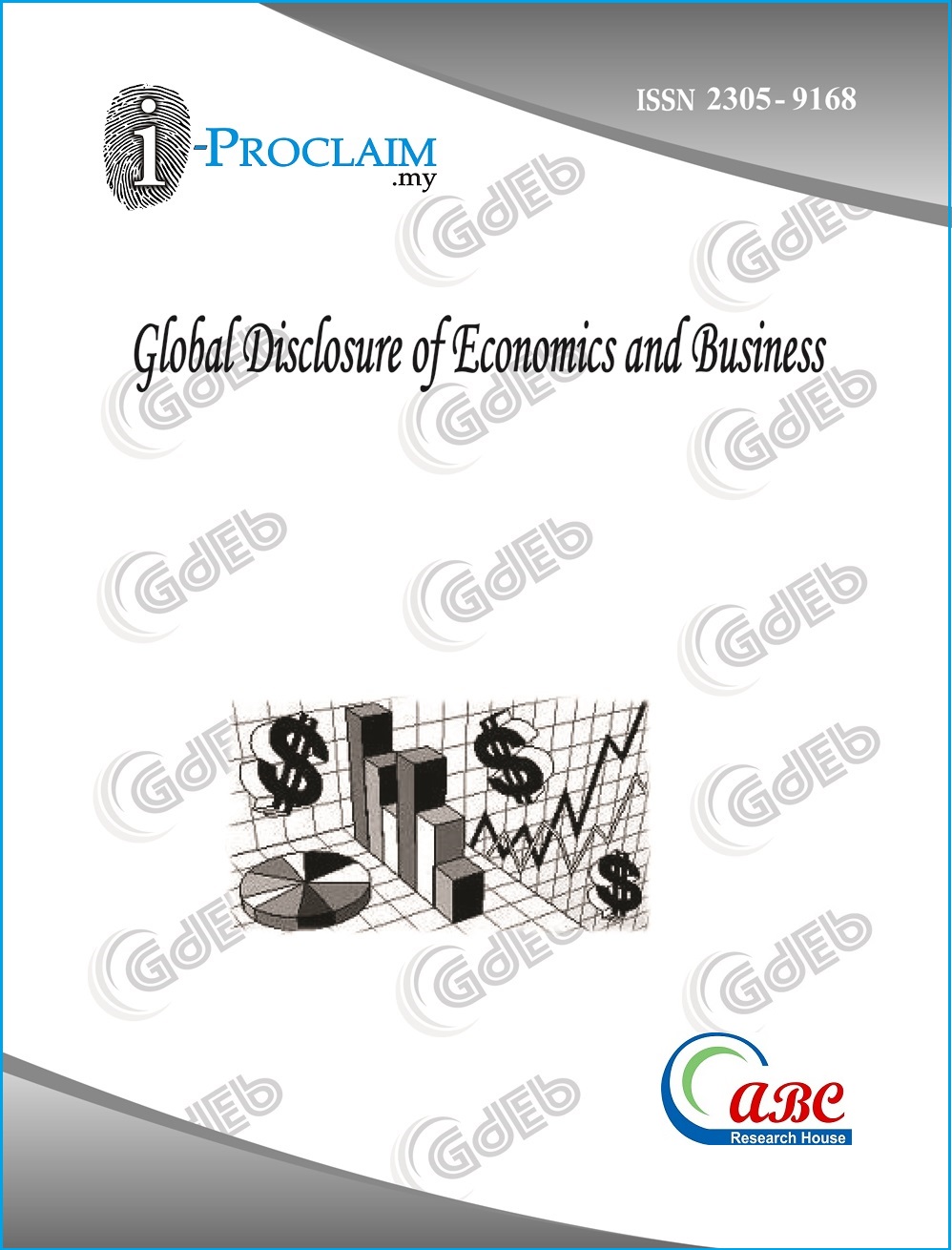Consumer Perception of Selecting Brand: A Comparative Study between Pepsi Cola and Mojo Cola
DOI:
https://doi.org/10.18034/gdeb.v5i1.128Keywords:
Brand, Quality, Price, Influenced by Others, Advertising, Packaging, Customer Based Brand Equity ModelAbstract
Consumers are so much conscious and sensitive in case of selecting brand .This study investigates the impact of consumer’s perception in selecting beverage products between Pepsi cola & Mojo cola. A survey was conducted by a significant number of respondents from the Pabna University of Science & Technology & surrounding areas. The data analyses were conducted by descriptive factor analysis, statistical tools & technique. The results revealed that the most of the consumers are highly concerned about the perception of brand regarding selection of Pepsi cola & Mojo cola beverage drinks. This is a relatively new issue that remains largely undiscovered by researchers under our country’s perspective. It is hoped that the findings may assist the local (Akij Beverage Ltd.) and multinational (Transcom Beverage Ltd.) beverage companies about the necessities of enhancing their brand perception. The paper adds to the existing body of research on beverage consumers particularly on consumer’s perceptions and expectations from these brands.
Downloads
References
Agarwal, M.K. & Rao, V.R. (1996). “An Empirical Comparison of Consumer-Based Measures of Brand Equity.” Marketing Letters, 7(3), pp. 237- 247. DOI: https://doi.org/10.1007/BF00435740
Ahmed, J., & Rouf, M. (2014). Controlled, Uncontrolled Communication, Brand Name and Brand Attitude: A Relational Study on Cellular Telecom Sector of Bangladesh. American Journal Of Trade And Policy, 1(3), 102 - 108.
Alam, N., & Rubel, A. (2014). Impacts of Corporate Social Responsibility on Customer Satisfaction in Telecom Industry of Bangladesh. ABC Journal Of Advanced Research, 3(2), 26 - 37. DOI: https://doi.org/10.15590/abcjar/2014/v3i2/54976
Atilgan. E, Aksoy S. and Akinci S. (2005). “Determinants of the Brand Equity: A Verification Approach in the Beverage Industry in Turkey.” Marketing Intelligence and Planning, 23(2/3), pp. 237-248. DOI: https://doi.org/10.1108/02634500510597283
Bijuna C. Mohan (March 2016),“The impact of customer-based brand equity on the operational performance of FMCG companies in India.” Volume 28, Issue 1, Pages 13–19. DOI: https://doi.org/10.1016/j.iimb.2015.11.002
Burmann,C., Jost-Benz, M. & Riley, N. (2009), “Towards An Identity-Based Brand Equity Model.” Journal of Business Research, 62(1), pp. 390 - 397. DOI: https://doi.org/10.1016/j.jbusres.2008.06.009
Charumbira, L. (2015). Perceived Brand Equity in Professional Sports Teams: A Zimbabwean Consumers’Perspective. Asian Business Review, 5(3), 131-140. doi:http://dx.doi.org/10.18034/abr.v5i3.660 DOI: https://doi.org/10.18034/abr.v5i3.660
Chile, L., & Talukder, D. (2014). The Paradox of Agricultural Trade Liberalization in Bangladesh and Tanzania.American Journal Of Trade And Policy, 1(1), 23 - 31. DOI: https://doi.org/10.15590/ajtp/2014/v1i1/54046
Chowdhury, M., & Rahman, M. (2015). Consumer Attitude Towards the Cell Phone: A study on Young Generations of Chittagong Metropolitan City, Bangladesh. Asian Business Review, 3(3), 16-20. doi:http://dx.doi.org/10.18034/abr.v3i3.290 DOI: https://doi.org/10.18034/abr.v3i3.290
Con Kevin Lane Keller (Jan. 1993) “Conceptualizing, Measuring, and Managing Customer-Based Brand Equity” Journal of Marketing Vol. 57, No. 1, pp. 1-22.
Fatema, M., Azad, M., & Masum, A. (2015). Impact of Brand Image and Brand Loyalty in Measuring Brand Equity of Islami Bank Bangladesh Ltd.. Asian Business Review, 2(1), 42-46. doi:http://dx.doi.org/10.18034/abr.v2i1.314 DOI: https://doi.org/10.18034/abr.v2i1.314
Hafiz, R. (2015). Rethinking Brand Identity to Become an Iconic Brand - A Study on Pepsi. Asian Business Review, 5(3), 97-102. doi:http://dx.doi.org/10.18034/abr.v5i3.585 DOI: https://doi.org/10.18034/abr.v5i3.585
Hossain Md. Enayet (2007) “An Evaluation of Brands Image, Product Attributes and Perceived Quality of a Selected Consumer Non-durable Product.” Administration and Management Review Vol. 19, No. 2, Special Issue pp. 47-63.
Josep-Francesc Valls (Spain), María Jose Andrade (Spain), Raquel Arribas (Spain) (2011) “Consumer perception Towards brands in times of great price sensitivity” Innovative Marketing, Volume 7, Issue 2.
Kotler, Keller & et al. (2007). “Marketing Management: A South Asian Perspective.” (12th edition), Pearson Prentice Hall, New Delhi, India. p. 257.
Mahmud S, (2006). University of Dhaka studied a research on “Brand competition: Beverage Industry of Bangladesh.
Malhotra K Naresh, Marketing Research an Applied Orientation, 4th edition.
Meghan Deichert,et.al. (2006) in the study of “Strategic Management in a Global Context.
Oyeniyi O (2009) “Analysis of Nigerian Consumers’ Perception of Foreign Soft Drinks”
Paracha A M J, Waqas M, Khan A R & Ahmad S (2012) “Consumer Preference Coca Cola Versus Pepsi-Cola”
R. Kenneth Teas (Oct.1993) “Expectations, Performance Evaluation, and Consumers' Perceptions of Quality.” Journal of Marketing Vol. 57, No. 4, pp. 18-34.
R. Shashikala, A. M. Suresh (March 2013) “Measuring Customer Based Brand Equity Using Aaker's Model” Volume 43, Issue 3. DOI: https://doi.org/10.17010/ijom/2013/v43/i3/36366
R. Kenneth Teas Sanjeev Agarwal “The effects of extrinsic product cues on consumers’ perceptions of quality, sacrifice, and value” Journal of the Academy of Marketing research, March 2000, Volume 28, Issue 2, pp 278-290. DOI: https://doi.org/10.1177/0092070300282008
Salehe, M., Luomba, J., Musiba, M., Mlaponi, E., & Mghamba, K. (2014). Consumer Preference on Value Added Products of Farmed Fish in Lake Victoria Basin, Tanzania. Asian Journal Of Applied Science And Engineering, 3(4), 396-401.
Tong, X. and Hawley, J.M.(2009). “Measuring customer-based brand equity: Empirical Evidence from the sportswear market in China” DOI: https://doi.org/10.1108/10610420910972783
Ukpebor P & Ipogah B (2008) “A Study to Indicate the Importance of Consumer Based Brand Equity on Consumer Perception of Brand”
Valarie A. Zeithaml (July 1988) “Consumer Perceptions of Price, Quality, and Value: A Means-End Model and Synthesis of Evidence”. Journal of Marketing Vol. 52, No. 3. pp. 2-22. DOI: https://doi.org/10.1177/002224298805200302
Xueling Luo, (2006) in the study of “Factors influencing choosing brand”.
--0--










